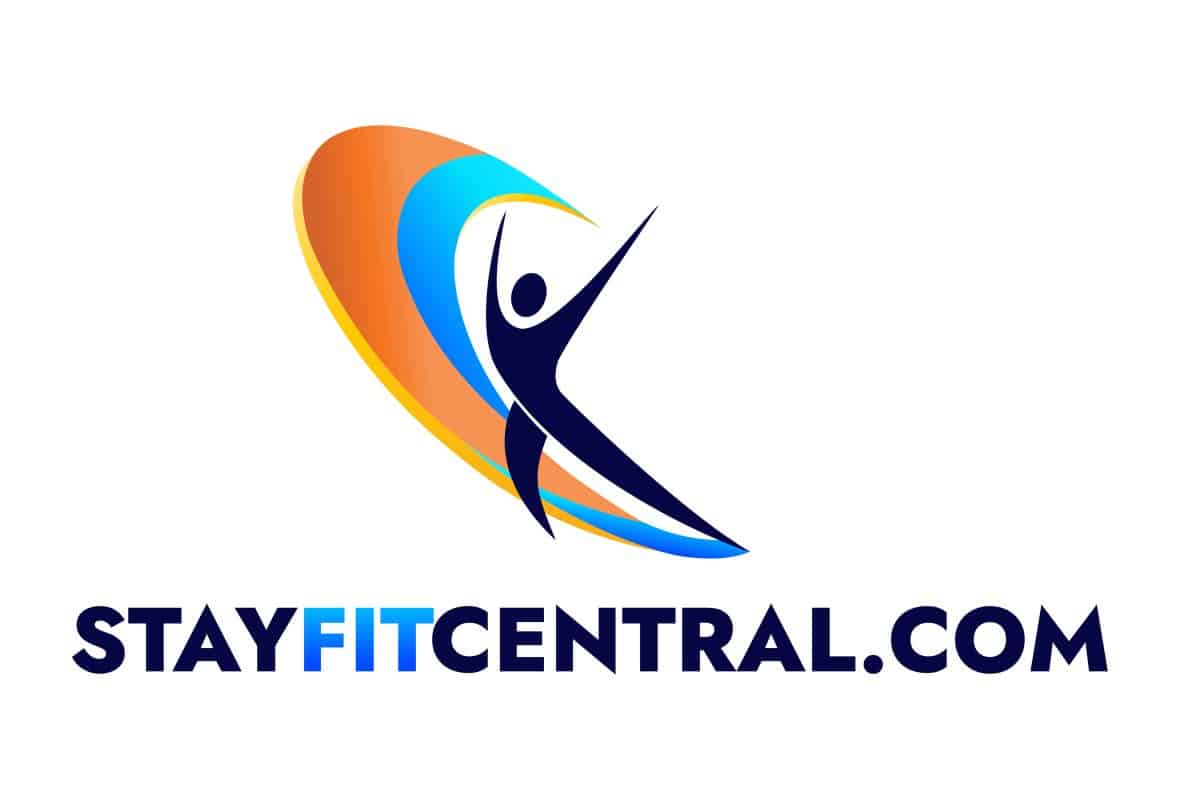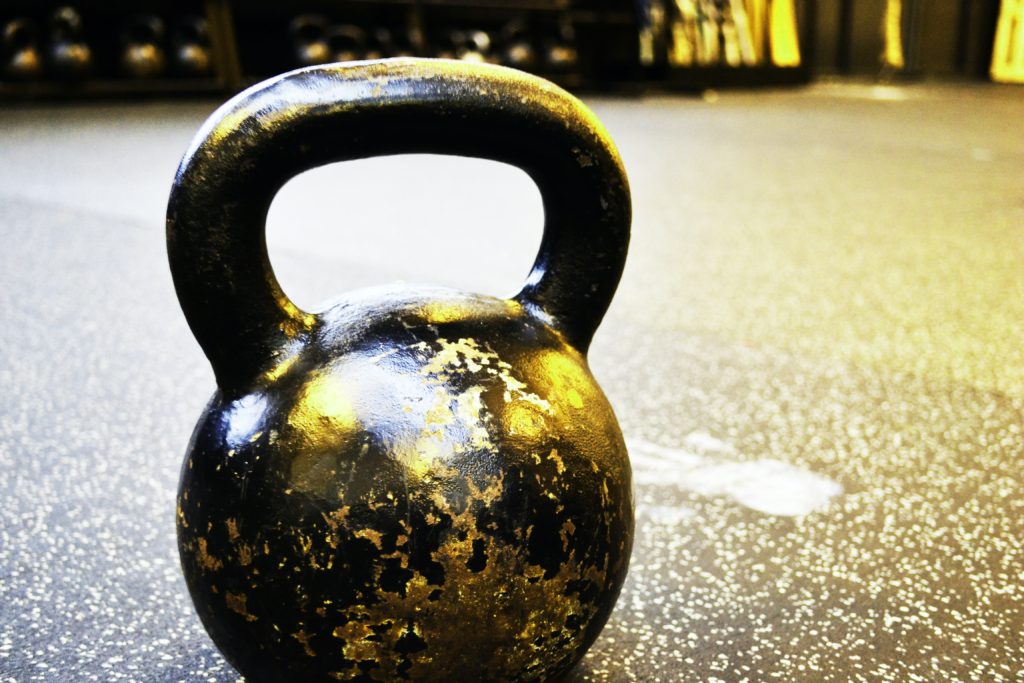Workouts
The 6 Best Standing Kettlebell Ab Exercises
If you want to build strong abs and core muscles, you’ve got to do lots of standing kettlebell ab exercises. Movements like kettlebell halos, slams, marches, and windmills from a standing position better mimic many movements in sports and your everyday life. From hitting a forehand volley in tennis, running, and carrying heavy suitcases through the airport, having strong abs helps.
Research supports my claim. Results from this study finds that doing abdominal exercises from a standing position is more effective than lying down.
I’m not saying you should never do another dead bug or plank. They have their place in your program too. But standing ab exercises with a kettlebell are overlooked by too many of us.
Benefits Of Standing Kettlebell Ab Exercise
- Mimic real life & sport – examples
- Research shows more effective or should be done too?
- Rotational movements easier to do
- Use heavier weights, more resistance
- Strengthen rest of core, other muscles
Now that you know why you should do at least some of your training standing up, let’s learn about the 6 best kettlebell ab exercises.
The Best Standing Kettlebell Ab Exercises
- Standing Kettlebell Halos
Often used for shoulder mobility and strength, halos also build strong abs. Here’s how. Since they involve you rotating your arms and a heavy kettlebell around your head your entire upper body will want to twist too.
To prevent this twisting, you’ll have to tighten, or brace your abs. Over time, this makes them stronger.
Research finds that practicing this bracing movement strengthens your abs quickly. Up to 16% in just 8 weeks. It also strengthens your hip muscles.
Kettlebell Halo Tips
- Start with a light weight.
- Brace your abs before you begin.
- Don’t hold your breath, breath on every rep.
- Switch directions to get strong in all directions.
Here’s a video of Rebeca Rouse from the USA Iron channel on Youtube demonstrating how to perform standing kettlebell halos. She really demonstrates great form. Notice how she braces her abs and doesn’t twist from the waist while does the exercise.
- Kettlebell Figure 8s
If you haven’t done these before, you’re in for a real surprise. You’ll not only get a great workout in but also build a stronger lower back, hamstrings, and hip flexors.
When you do a figure 8 with a kettlebell, your abs are trained 2 ways. They’re first used as a brace to keep your posture in check during the hip hinge part of the exercise. Just like a kettlebell swing. Then they’re used to twist your a little to do the ‘figure 8’ between your legs. Most of the benefit is from the bracing aspect of this exercise .
In addition to your abs your glutes and hamstrings get a workout. As do the rest of our core muscles.
Tips For Doing Kettlebell Figure 8s
- Brace your abs before bending over to start.
- Keep them tight the entire time but don’t hold your breath.
- Do a figure 8 in each direction on every rep.
- Pivot on the ball of your foot to do a better twist.
Watch this video of trainer Lauren Brooks demonstrate a few ways to do kettlebell figure 8s. Lauren’s technique is awesome by the way. Once you get the basic figure 8 down, try the other variations she demonstrates.
- Kettlebell Woodchop
Traditionally done with a medicine ball or cable machine, I think using a kettlebells is best. This is because of the ‘bells unique center of gravity that pulls the weight down towards the ground on each rep. Having to fight this to keep your form good helps you get stronger, faster.
As you’ll see in the video below, this exercise mimics the motion you make when chopping wood. It’s another rotational exercise that mimics lots of movement patterns. In sports this includes: hitting a tennis ball, turning a surfboard on a wave, and a full or half volley kick in soccer. It’s also similar to how you move to pick up and move something heavy from the floor.
I personally notice that the stronger I get in rotational
Movements like Woodchoppers, the better I am at surfing and Jiu Jitsu. Especially throws and cracking a turn off the lip.
Here’s a video that demonstrates great technique.
Tips For Doing Kettlebell Woodchops
- They can be done with lighter weights for explosive/power training and heavier ‘bells to build strength.
- Don’t stand flat footed. Pivot in the balls of your feet when you rotate.
- Hold the kettlebell by the vertical part of the handle. It makes better technique easier.
- Breath out at the top of every rep.
- Kettlebell Slams
Here’s a kettlebell exercise for your abs that also helps you get out your aggression. KB slams are done just like the name implies. You pick the kettlebell up overhead and slam it straight down into the ground. Then repeat.
This movement is kind of like a standing crunch. Your abs are first trained because you brace them. Then, they’re used again when you slam the kettlebell into the ground and you hinge slightly at your hips. Just like when you do crunches.
I have to say, they’re my favorite ab exercise. I do them every time I train at the beach and always feel energized and focused afterward. You will too. No matter what your mood is before you start.
Just make sure you do them outside on soft ground. Doing slams on a hard surface like concrete will crack it and your kettlebell.
Tips and tricks to get the most from this exercise
- Keep your head neutral, looking forward throughout the exercise.
- Hold the kettlebell by the vertical sides of the handle..
- Used your abs and core to slam the kettlebell. Don’t throw it down with your arms.
- Breath in while lifting the weight overhead. Exhale forcefully when slamming the kettlebell into the ground.
This video shows you how to do kettlebell slams.
- Kettlebell Windmills
Here’s another great rotational ab exercise that trains pretty much every major muscle group from your shoulders to your calves to work together. They get their name because you resemble a windmill when you do them correctly.
Believe me, you’ll really feel this one when you’re doing it the day after. I sure did. Every abdominal muscle in my body, from my rectus abdominus to my obliques were sore.
Windmills are also a great exercise to improve mobility in your upper back, shoulders, and hips. Think of them as an ab exercise that’s also an all in one total body mobility and strength builder.
In the video below, Emma Bissonnette shows you how to do a kettlebell windmill with perfect form. Make sure you read the description she has listed on her post too. As with any exercise practice makes perfect. It can be a little tricky and take a minute to build enough mobility but the effort is worth the reward.
Tips For Doing Kettlebell Windmills
- Keep your weight on your back leg. Your front foot should feel as weightless as possible.
- Breath. It’s easy to hold your breath dong windmills, that just makes good technique tougher.
- Start with a light weight. Get your technique down first.
- So many sets of 2-3 reps per side at first. This is another tip for getting your form perfect.
- KB Static Holds
Here’s a standing ab exercise you probably haven’t done before. Think of them as a farmers walks without the walking.
Static kettlebell holds have you standing still using the same positions as a weighted carry for several seconds to minutes. Kind of like a weighted yoga pose. It’s holding these positions against the resistance of kettlebells that forces your abs to work so hard. Relax them and your form fails immediately.
You’ll notice the benefits of static holds after you’ve done them for a while and then have to stand or carry something heavy. Their benefit will be obvious when you notice how much easier it was to hold something in an odd position for a long time.
If you’re a runner you’ll really benefit from them. Here’s why. Think about when you’re at the end of a hard run and getting tired. One of the first thing that breaks down is your posture. Your upper body starts to slump. Then your performance tanks.
Holding the heaviest possible weight in the positions below builds strength in your abs and upper back in a way that enables you to keep running upright and fast all the way to the end.
Static Holds – Tips And Tricks
- Start with many sets of short durations 15 seconds is a good place to start. Work up to 3 minutes per set.
- Don’t hold your breath. Keep your abs tight while breathing normally.
- Stop as soon as proper posture and technique can no longer be maintained.
No matter what position you choose you’ll be forced to brace your abs and give them a great workout.
Here are a few positions to do.
- Holding a kettlebell overhead
- A kettlebell in each hand by your sides
- Holding the kettlebell by its horns (sides of the handle) and away from your body, arms locked, chest high.
- KB Static Holds videos
- KB over head hold
- KB Farmers Carry Hold
- KB Rack hold
- https://m.youtube.com/watch?v=wLNgt4bzEAs
- KB Horizontal Hold
Below are videos that show you how to perform 3 different types of static holds: overhead from the Foundation Youtube channel, farmers carry demonstrated by MeauxFitness , and rack holds from Functional Bodybuilding.
How To Add Standing Ab Exercises To Your Workouts
You should train your abs, and do these exercises just like squats, presses, and most any other lift. Use as heavy a weight as possible that you do for 5-10 reps and anywhere from 2-5 sets. As always, good technique is a must.
I like to do 1-2 standing and another ab exercise like planks at each workout. Mix it up and keep things fun. Depending on your needs, injuries, weaknesses, sport requirements, etc. you’ll need to choose different exercises.
You can also do them as part of a kettlebell complex or ‘flow’. This is where you use 1 or 2 ‘bells to do several exercises without resting between each.
Here’s an example
- Kettlebell Figure 8s
- Kettlebell Windmills
- Kettlebell Front Squats
- Kettlebell Static Holds
Conclusion
Give these 6 standing kettlebell ab exercises a try over the next month and see for yourself how great they are for building stronger abs and a more mobile body that works better. You’ll never lie down to do hundreds of useless crunches again.
Expert Quotes
“The windmill is what we consider a Dynamic Integrated Stabilization exercise. While the main focus of the core is to protect your spine and back by bracing the core muscles, we are doing this in a dynamic way. Our hips are moving while our shoulders are stabilizing causing our core to work even harder to maintain it’s control of the movement being done.” Mike Hanley https://www.hanleystrength.com/Sources
Sources
Saeterbakken AH, Fimland MS. Muscle activity of the core during bilateral, unilateral, seated and standing resistance exercise. Eur J Appl Physiol. 2012 May;112(5):1671-8. https://pubmed.ncbi.nlm.nih.gov/21877146/
Tayashiki K, Maeo S, Usui S, Miyamoto N, Kanehisa H. Effect of abdominal bracing training on strength and power of trunk and lower limb muscles. Eur J Appl Physiol. 2016 Sep;116(9):1703-13. https://pubmed.ncbi.nlm.nih.gov/27377782/
- Why You Should Buy An AI Personal Trainer - April 5, 2024
- Before You Buy –Features Personalized AI Workouts Require - March 20, 2024
- AI Workouts Have Come To The Super Bowl - February 7, 2024

